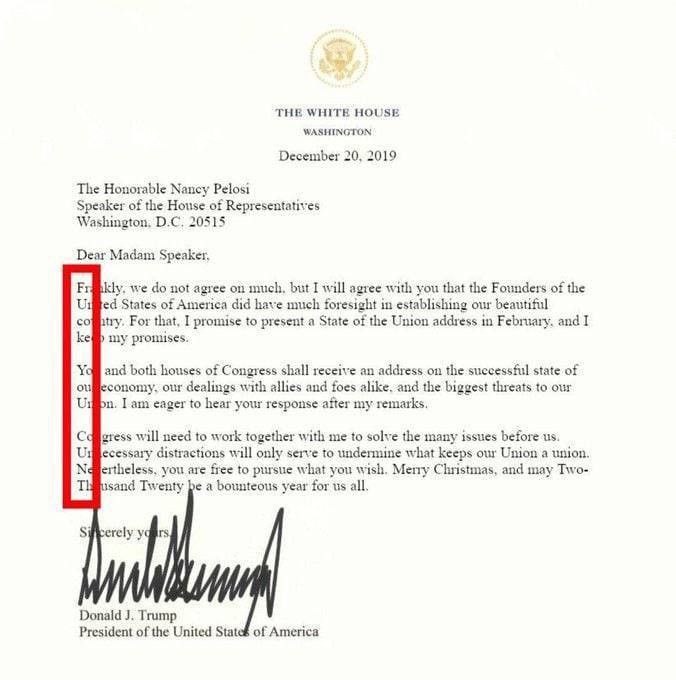It looks like you're using an Ad Blocker.
Please white-list or disable AboveTopSecret.com in your ad-blocking tool.
Thank you.
Some features of ATS will be disabled while you continue to use an ad-blocker.
share:
a reply to: IndieA
We have some serious weirdness here.
NH C_A tlantic tweet-Storm Comms?
"NHC has released the Tropical Cyclone Report for Potential Cyclone #Twenty-Two". November 16-18 [17], 2023.
Posted February [2], [2]8- #2222
Al 222023.
Text Trump to 88022
#22 Nov 1, 2017
Who controls the NG?
Why was the NG recently activated in select cities within the U.S.?
Can the NG work in coordination with the marines?
Do conditions need to be satisfied to authorize?
What former President used the military to save the Republic
and what occurred exactly?
Biggest drop to ever be provided on Pol. Study and Prepare. The
masses tend to panic in such situations. No war. No civil unrest.
Clean and swift.
7 beginning sentences with caps. 2024-2017=7.
9 sentences- Bill Gates=9. Rory Gates= 9. W=23.
We have some serious weirdness here.
NH C_A tlantic tweet-Storm Comms?
"NHC has released the Tropical Cyclone Report for Potential Cyclone #Twenty-Two". November 16-18 [17], 2023.
Posted February [2], [2]8- #2222
Al 222023.
Text Trump to 88022
#22 Nov 1, 2017
Who controls the NG?
Why was the NG recently activated in select cities within the U.S.?
Can the NG work in coordination with the marines?
Do conditions need to be satisfied to authorize?
What former President used the military to save the Republic
and what occurred exactly?
Biggest drop to ever be provided on Pol. Study and Prepare. The
masses tend to panic in such situations. No war. No civil unrest.
Clean and swift.
7 beginning sentences with caps. 2024-2017=7.
9 sentences- Bill Gates=9. Rory Gates= 9. W=23.
originally posted by: Thoughtful3
a reply to: Thoughtful3
I'm totally creeped out.
#2222
No.
Highest classification.
Consider the vastness of space.
8 words. #2222=8 and this is from 8 chan. N=13, C= 3= 16. H=8...16-8=8.
N=13, H=8, C=3.
13+8+3 = 24 = X
Consider the vastness of "SpaceX" ?
edit on 4/3/2024 by nerbot because: (no reason given)
a reply to: nerbot
Well that was brilliant.
Bourla's thriller is chock full of symbolism. Since I seem to be up to my neck in #2222, what if the aliens have blue blood?
Why some animals have blue, green or purple blood
CF has been posting about octopuses. Mr. Pool posted about the horseshoe crab.
"The horseshoe crab has bright blue blood that gets harvested for bacterial testing kits by pharmaceutical companies." Just horrible- they bleed them alive. Makes them look like the monsters they are.
The word on the jacket that is in cobalt blue is Moonshot- [8]. The cap on the vial is purple.
I'm taking a closer look at this. The last word on the top sentence Month- the M is in caps =13.
Next line 3rd word is Make=13. M & M- I've looked everywhere for this.
13+13=26> 2026. It is right in our face.
The vial is half full- so a two part plan, and then we have the two mRNA jabs, with the switcheroo to the different one given to the public.
9 months= 270 days from January 1st which would take us to September 27.
Page 27- "On April 9, we signed a collaboration agreement to codevelop a first-in-class, mRNA-based coronavirus vaccine, aimed at preventing COVID-19 infection. BioNTech received from us $72 million up-front payment and was eligible for future milestone payments of an additional $563 [11.3?] million for a total consideration of $636 [666] million.
In addition, we were going to provide $113 [11.3?] million in cash to them by buying equity from the company [bringing our total ownership of the company to about 2.3 percent at that time.]
This agreement split the world between them; BioNTech taking Germany and Turkey and Pfizer the rest but then the last sentence...
"China was excluded from this agreement, as BioNTech already had an agreement with a Chinese company- not named but it was Fosun Pharmaceuticals.
Mirror Page 72-
"And it took them less than three years to accomplish their goal of exterminating the community." Second sentence from the bottom= 23.
Since everything has meaning for this psychopath-
National Previvor Day- Cancer
This group of people already predisposed to developing cancer would be especially vulnerable to developing cancer from his mRNA jab.
Well that was brilliant.
Bourla's thriller is chock full of symbolism. Since I seem to be up to my neck in #2222, what if the aliens have blue blood?
Why some animals have blue, green or purple blood
CF has been posting about octopuses. Mr. Pool posted about the horseshoe crab.
"The horseshoe crab has bright blue blood that gets harvested for bacterial testing kits by pharmaceutical companies." Just horrible- they bleed them alive. Makes them look like the monsters they are.
The word on the jacket that is in cobalt blue is Moonshot- [8]. The cap on the vial is purple.
I'm taking a closer look at this. The last word on the top sentence Month- the M is in caps =13.
Next line 3rd word is Make=13. M & M- I've looked everywhere for this.
13+13=26> 2026. It is right in our face.
The vial is half full- so a two part plan, and then we have the two mRNA jabs, with the switcheroo to the different one given to the public.
9 months= 270 days from January 1st which would take us to September 27.
Page 27- "On April 9, we signed a collaboration agreement to codevelop a first-in-class, mRNA-based coronavirus vaccine, aimed at preventing COVID-19 infection. BioNTech received from us $72 million up-front payment and was eligible for future milestone payments of an additional $563 [11.3?] million for a total consideration of $636 [666] million.
In addition, we were going to provide $113 [11.3?] million in cash to them by buying equity from the company [bringing our total ownership of the company to about 2.3 percent at that time.]
This agreement split the world between them; BioNTech taking Germany and Turkey and Pfizer the rest but then the last sentence...
"China was excluded from this agreement, as BioNTech already had an agreement with a Chinese company- not named but it was Fosun Pharmaceuticals.
Mirror Page 72-
"And it took them less than three years to accomplish their goal of exterminating the community." Second sentence from the bottom= 23.
Since everything has meaning for this psychopath-
National Previvor Day- Cancer
This group of people already predisposed to developing cancer would be especially vulnerable to developing cancer from his mRNA jab.
a reply to: nerbot
I'm making a hunch on this but what about #270?
#270 December 5, 2017
Adm R/ No Such Agency/ (W&W) + POTUS/ US MIL
Apply the Keystone.
Paint the picture.
DOD Covid-19 Timeline
Everything I have looked at aligns with some specific numbers such as 23. Of course #11 is special too.
Feb 11, 2019 WHO officially named Covid-19.
March 11, WHO declared the p[l]andemic.
April 11, Major disaster declaration for all 50 states- first time in history.
November 17, 2019 was the first post- Chinese patient zero.
In light of the clinical trial problems that Brook Jackson, the whistleblower, identified -September 3, 2020 is concerning.
"As part of Operation Warp Speed 5 DOD medical treatment facilities are identified for phase 3 Covid vaccine trials."
They must have detected problems but said nothing???
January 23, 2019 China put Wuhan on lock-down. President Xi is Bill Gates BF. Billy loves #23.
WEF held their annual meeting January 20- 24, 2020.
President Trump made a speech there on January 22nd which many did not like.
December 23, 2020 HHS + DOD jointly announced an agreement with Merck to continue the development and large scale manufacturing of Covid-19 treatment MK-7110. And purchased $100 million Pfizer doses. 100 Days to prevent Disease X.
December 14, 2020 is very disturbing. The first Covid-19 vaccines were distributed in the U.S.
But the UK identified a new variant on the same date.
December 18, 2020 South Africa identified a new variant. But the roll out continued despite the fact that new variants were already emerging. Bill Gates funds the labs that identified the variant in SA.
I could go on...
---
W & W
Bill Gates became the head of Microsoft at age 23.
Then there are the children's ages,
Jennifer- 23 April 26, 1996.
Rory- May 23, 1999.
Phoebe September 14, 2002- will be 23 in 2025.
Jennifer Gates announced her pregnancy November 23, 2022.
Page 230 in Billy's thriller- "Building better data systems will make it easier to see where supplies are needed and to verify who's been vaccinated." The he goes on about the playbook.
&= 7. Bill Gates will be 70 in 2025.
Leila, the grandchild will be 7 in 2030.
Vaccine=7.
Microsoft=9.
September=9 Bill Gates father died September 14, 2020 and September 14 is Phoebe's birthday.
Melinda [7] Gates birthday is August 15, 1964. Bill Gates birthdate is October 28, 1955 making 9 years age difference.
Bill Gates book "How to Prevent the Next P[l]andemic- 9 chapters.
"Disease X- 100 Days Mission to End Pandemics"- 9 chapters.
There was a plan.
Albert=6
Bourla=6
Pfizer=6.
Moderna=7
Vaccine=7
Stephane=7
Ugur Sahin=9
BioNTech=8 Total=17.
I could go on and on...
I'm making a hunch on this but what about #270?
#270 December 5, 2017
Adm R/ No Such Agency/ (W&W) + POTUS/ US MIL
Apply the Keystone.
Paint the picture.
DOD Covid-19 Timeline
Everything I have looked at aligns with some specific numbers such as 23. Of course #11 is special too.
Feb 11, 2019 WHO officially named Covid-19.
March 11, WHO declared the p[l]andemic.
April 11, Major disaster declaration for all 50 states- first time in history.
November 17, 2019 was the first post- Chinese patient zero.
In light of the clinical trial problems that Brook Jackson, the whistleblower, identified -September 3, 2020 is concerning.
"As part of Operation Warp Speed 5 DOD medical treatment facilities are identified for phase 3 Covid vaccine trials."
They must have detected problems but said nothing???
January 23, 2019 China put Wuhan on lock-down. President Xi is Bill Gates BF. Billy loves #23.
WEF held their annual meeting January 20- 24, 2020.
President Trump made a speech there on January 22nd which many did not like.
December 23, 2020 HHS + DOD jointly announced an agreement with Merck to continue the development and large scale manufacturing of Covid-19 treatment MK-7110. And purchased $100 million Pfizer doses. 100 Days to prevent Disease X.
December 14, 2020 is very disturbing. The first Covid-19 vaccines were distributed in the U.S.
But the UK identified a new variant on the same date.
December 18, 2020 South Africa identified a new variant. But the roll out continued despite the fact that new variants were already emerging. Bill Gates funds the labs that identified the variant in SA.
I could go on...
---
W & W
Bill Gates became the head of Microsoft at age 23.
Then there are the children's ages,
Jennifer- 23 April 26, 1996.
Rory- May 23, 1999.
Phoebe September 14, 2002- will be 23 in 2025.
Jennifer Gates announced her pregnancy November 23, 2022.
Page 230 in Billy's thriller- "Building better data systems will make it easier to see where supplies are needed and to verify who's been vaccinated." The he goes on about the playbook.
&= 7. Bill Gates will be 70 in 2025.
Leila, the grandchild will be 7 in 2030.
Vaccine=7.
Microsoft=9.
September=9 Bill Gates father died September 14, 2020 and September 14 is Phoebe's birthday.
Melinda [7] Gates birthday is August 15, 1964. Bill Gates birthdate is October 28, 1955 making 9 years age difference.
Bill Gates book "How to Prevent the Next P[l]andemic- 9 chapters.
"Disease X- 100 Days Mission to End Pandemics"- 9 chapters.
There was a plan.
Albert=6
Bourla=6
Pfizer=6.
Moderna=7
Vaccine=7
Stephane=7
Ugur Sahin=9
BioNTech=8 Total=17.
I could go on and on...
twitter.com...

In my opinion, the Deep State, knowing that it faces certain defeat, will never allow free elections in November.
They know it would be the end.
They will try everything to avoid it... even if it means dragging the whole world to hell with them.

In my opinion, the Deep State, knowing that it faces certain defeat, will never allow free elections in November.
They know it would be the end.
They will try everything to avoid it... even if it means dragging the whole world to hell with them.
twitter.com...
This explains why conspiracy theorists almost always agree on global events.
They have the same antibodies.

in reality, Covid has led to a precious type of immunization for some:
that against manipulation.
Those who have not understood what happened have not developed antibodies and are still manipulated by media propaganda on any topic.
This explains why conspiracy theorists almost always agree on global events.
They have the same antibodies.

edit on 4-3-2024 by duncanagain because: (no reason given)
Inside the CIA's plot to assassinate Julian Assange :
edit on 4-3-2024 by duncanagain because: (no reason given)
originally posted by: Thoughtful3
I could go on and on...
Let me add to the pot. I've been scrutinising the "Moonshot" contents page. I overheated my brain a little but here are some obvious nuggets and there's plenty of symbolism. Perhaps you would do better with many things relating to dates though....
Foreword and Preface pages = ix = 9 + xi = 11 = "9/11"
Dealing with just the CAPS and chapter numbers:
Chapter 1 = "ONE" or "A" (singular), + "B", "N" = 14 = 1 + 4 = "A" + "D" = "AD"... 21 (U) = 20"21" = "ONE BAD 2021" or "A BAD 2021"
Chapter 6 = 6(chapter), + 16 (P) = 1x6, + 16 (P) = 1x6, + "Future", = "666 FUTURE". (To write it as "Past, Present And Future" would be correct grammar imo but avoided).
Chapter 8 (infinite/endless), 5 (E) + 5 (E) = 10 = "I/O system" or "digital", S = "Social" + T = "Tracking" + D = "Digital" = "DIGITAL SOCIAL TRACKING".
Chapter 11, 20 (T), 19 (S) = 1 + 9 = "A" + "I" = "A.I.", 20 (T), = 20/20 + A.I. = "CLEAR FOR A.I. CONTROL".
I had to stop, my head hurt.
These maneuvers will last 12 days, and will take place in northern Norway, Sweden and Finland, not far from the Russian border, and will involve 20,000 soldiers from 14 countries including Italy, America, France, Great Britain, the Netherlands and the United States.
20,000 NATO soldiers are also participating in exercises in Poland, to demonstrate that NATO is ready and able to protect its people and defend every part of its allies' territory.
So we will have 40000 soldiers playing war games on the borders of Russia!
COMPLIMENTS!
TRULY BRILLIANT!
They really don't know what to invent anymore to provoke THE RUSSIAN BEAR

edit on 4-3-2024 by duncanagain because: (no reason given)
a reply to: nerbot
Blue blood huh? What to open a sealed up rabbit hole?
WIKI: Methemoglobemia
And if Methylene Blue sounds familiar, well that's because it's been brought up before.
Just some basic background
Now here's the kicker.
National Center for Biotechnology Information
I wonder how long this was really know?
Blue blood huh? What to open a sealed up rabbit hole?
WIKI: Methemoglobemia
Methemoglobinemia, or methaemoglobinaemia, is a condition of elevated methemoglobin in the blood. Symptoms may include headache, dizziness, shortness of breath, nausea, poor muscle coordination, and blue-colored skin (cyanosis). Complications may include seizures and heart arrhythmias.
Methemoglobinemia can be due to certain medications, chemicals, or food or it can be inherited. Substances involved may include benzocaine, nitrites, or dapsone. The underlying mechanism involves some of the iron in hemoglobin being converted from the ferrous [Fe2+] to the ferric [Fe3+] form. The diagnosis is often suspected based on symptoms and a low blood oxygen that does not improve with oxygen therapy. Diagnosis is confirmed by a blood gas.
Treatment is generally with oxygen therapy and methylene blue. Other treatments may include vitamin C, exchange transfusion, and hyperbaric oxygen therapy. Outcomes are generally good with treatment. Methemoglobinemia is relatively uncommon, with most cases being acquired rather than genetic.
And if Methylene Blue sounds familiar, well that's because it's been brought up before.
Just some basic background
Methylthioninium chloride, commonly called methylene blue, is a salt used as a dye and as a medication. As a medication, it is mainly used to treat methemoglobinemia by chemically reducing the ferric iron in hemoglobin to ferrous iron. Specifically, it is used to treat methemoglobin levels that are greater than 30% or in which there are symptoms despite oxygen therapy. It has previously been used for treating cyanide poisoning and urinary tract infections, but this use is no longer recommended.
Methylene blue is typically given by injection into a vein. Common side effects include headache and vomiting. While use during pregnancy may harm the baby, not using it in methemoglobinemia is likely more dangerous.
Methylene blue was first prepared in 1876, by Heinrich Caro. It is on the World Health Organization's List of Essential Medicines.
Now here's the kicker.
National Center for Biotechnology Information
Methylene blue (MB), as the first fully man-made medicine, has a wide range of clinical applications. Apart from its well-known applications in surgical staining, malaria, and methemoglobinemia, the anti-oxidative properties of MB recently brought new attention to this century-old drug. Mitochondrial dysfunction has been observed in systematic aging that affects many different tissues, including the brain and skin. This leads to increaseding oxidative stress and results in downstream phenotypes under age-related conditions. MB can bypass Complex I/III activity in mitochondria and diminish oxidative stress to some degree. This review summarizes the recent studies on the applications of MB in treating age-related conditions, including neurodegeneration, memory loss, skin aging, and a premature aging disease, progeria.
I wonder how long this was really know?



Bye Bye Haley
edit on 4-3-2024 by duncanagain because: (no reason given)
new topics
-
🐰Most INSANE internet rabbit hole🕳
Secret Societies: 5 minutes ago -
Joe Rogan conspiracy (maybe)
ATS Skunk Works: 3 hours ago -
Results of the use of the Oreshnik missile system in Dnepropetrovsk
World War Three: 6 hours ago -
Nigel Farage now the Most Favoured UK Politician
Regional Politics: 7 hours ago
top topics
-
Little Johnny and Larry should team up
General Chit Chat: 13 hours ago, 12 flags -
Results of the use of the Oreshnik missile system in Dnepropetrovsk
World War Three: 6 hours ago, 10 flags -
Nigel Farage now the Most Favoured UK Politician
Regional Politics: 7 hours ago, 4 flags -
Joe Rogan conspiracy (maybe)
ATS Skunk Works: 3 hours ago, 3 flags -
Will Us use alien technology to fight in ww3?
World War Three: 14 hours ago, 2 flags -
🐰Most INSANE internet rabbit hole🕳
Secret Societies: 5 minutes ago, 0 flags
active topics
-
Results of the use of the Oreshnik missile system in Dnepropetrovsk
World War Three • 143 • : Oldcarpy2 -
-@TH3WH17ERABB17- -Q- ---TIME TO SHOW THE WORLD--- -Part- --44--
Dissecting Disinformation • 3354 • : Thoughtful3 -
🐰Most INSANE internet rabbit hole🕳
Secret Societies • 0 • : maferoxy2 -
Inca stone masonry at Sacsayhuaman, Ollantaytambo and the Sun Temple
Ancient & Lost Civilizations • 9 • : Astrocometus -
Post A Funny (T&C Friendly) Pic Part IV: The LOL awakens!
General Chit Chat • 7816 • : baddmove -
DOJ moving to wind down Trump criminal cases before he takes office
Mainstream News • 46 • : WeMustCare -
What Joe Rogan said Vs The View
Dissecting Disinformation • 23 • : cocnutcrab883 -
Nigel Farage now the Most Favoured UK Politician
Regional Politics • 7 • : NorthOS -
President-Elect TRUMP Picks Former Florida A.G. PAM BONDI to be U.S. Attorney General.
2024 Elections • 58 • : WeMustCare -
Well, here we go red lines crossed Biden gives the go ahead to use long range missiles
World War Three • 330 • : putnam6








